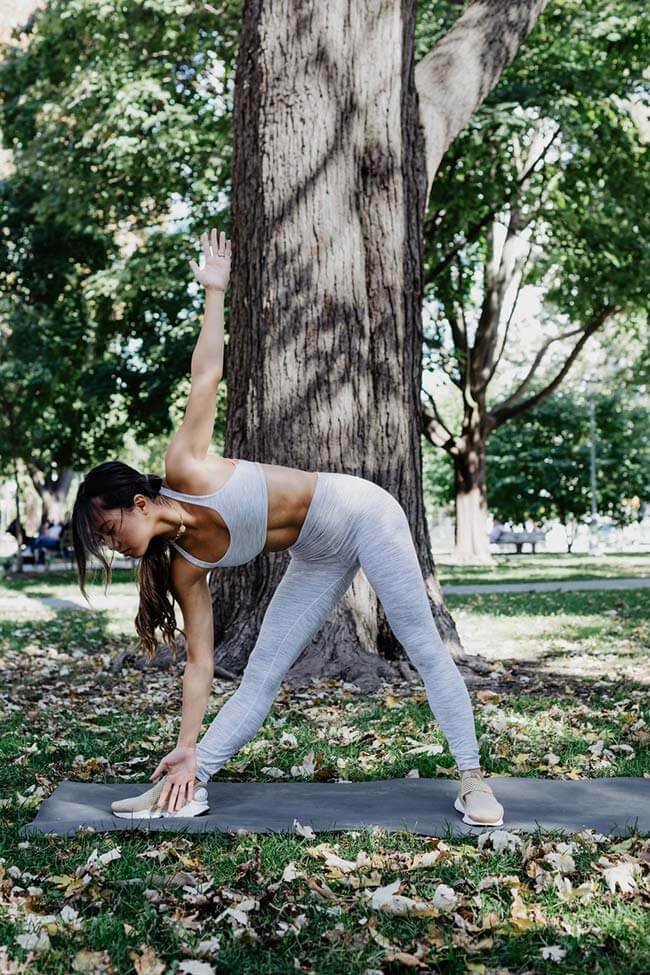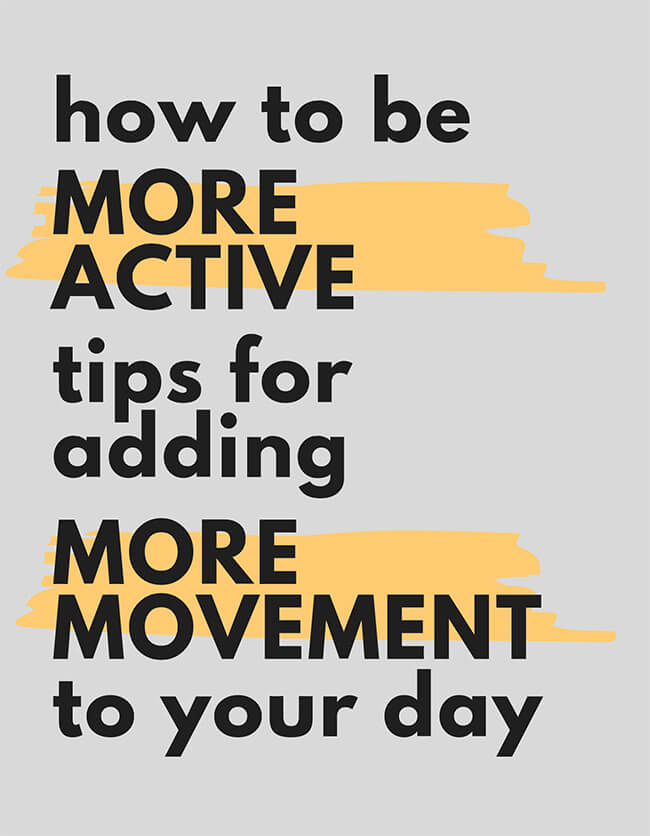How to be More Active – Tips for Adding More Movement to Your Day
Even if you have a regular exercise routine, it’s likely that you could benefit from adding more movement into your day. Our bodies are designed to move and move frequently – not just for set exercise sessions. If you learn how to be more active – meaning lower intensity movement more frequently – you will see some great overall health benefits.
How do you define active?
It’s important to understand what you might consider “active” vs. “sedentary”. I’ll give you two scenarios:
- An office worker who goes to the gym for a one hour workout 4-5 days a week.
- A maintenance worker for a building who performs daily repairs and maintenance (electrical, plumbing, painting, etc.) but doesn’t have any “formal” exercise routine.
Which person would you consider more active?
While you might think that the person with a formal exercise routine is more active, that’s actually not true. The office worker spends nearly all of the work day sitting, while the maintenance worker is moving constantly (walking from project to project, lifting, climbing, etc.).
They both sit during their commutes to/from work and plop on the couch when they get home. However, the office worker sits about 80-90% of the day while the maintenance worker sits about 20-30% of the day.
Reducing inactivity
How to be more active? It’s simple – reduce inactivity. It doesn’t have to be hours upon hours of crossfit or HIIT (high intensity interval training). In fact, it’s actually more effective to do lower intensity or minimal intensity activities such as walking for longer periods. Simply put – Move more, sit less.
You know the old saying, no pain no gain? It turns out that’s not quite true. While we fully endorse exercising hard and breaking a sweat if that’s your thing, what you do outside of the gym is just as important.
The duration of inactivity in your day is the most important factor to consider for your overall health.
Low intensity, for longer periods
In a study comparing low intensity movement (walking/standing) for 6 hours a day vs. higher intensity exercise (cycling) for 1 hour a day, the conclusion was that:
“One hour of daily physical exercise cannot compensate the negative effects of inactivity on insulin level and plasma lipids if the rest of the day is spent sitting. Reducing inactivity by increasing the time spent walking/standing is more effective than one hour of physical exercise, when energy expenditure is kept constant.” [Source]
Wow.
Are you relying on shorter bouts of harder exercise in your day (30-60 minute gym sessions or classes) as your primary movement? If so, you should consider trying to add more low intensity movement into your day.
Here is a great TED talk from Darryl Edwards on this topic.

How to be more active
Since reducing inactivity is critical, what can we do to fit sufficient amounts of low intensity physical activity in our daily routines? How can we “fit in” more movement to our busy lives?
The key is to incorporate and prioritize incidental movement – movement from simple daily activities.
10 tips for reducing inactivity
- Prioritize walking – Walk the dog, take a brisk walk over your lunch break, get up and walk around the office, walk while talking on your phone. Park farther away, take the stairs, walk to the store. Choose to walk.
- Do “mini-workouts” – Pick a few body weight exercises you can do anywhere and cycle through them each day. You can easily fit in quick, 1-2 minute sessions of things like push-ups, air squats and lunges during your day.
- Stand up – If you work at a desk, consider getting a standing desk. If that is not possible, set a timer to get up and move around (a simple walk around the office) every 30 minutes.
- Hold standing meetings – Try organizing a standing meeting a work. Move all of the chairs to the side and set a time limit of 15 minutes. Your meeting will be more focused and efficient and you’ll all do less sitting.
- Do some housekeeping – Household chores require movement. Sweeping, scrubbing or vacuuming, it all works! Plus, you get the added benefit of a clean house!
- Yardwork – Get outside to do simple things such as mowing the lawn, raking leaves, or washing your car.
- Play – Throw the ball around with your kids, play in the park, join an adult sports league, play with the dog, etc.
- Volunteer – Find a cause you are interested in and volunteer weekly. Coach youth sports, help with a fundraiser in your community, mentor youth, build houses for Habitat for Humanity. There are so many options to find something that will benefit yourself and others.
- Add movement to existing habits – Do 20 air squats after brushing your teeth, go for a 20 minute walk after lunch, add a walk around the office to every bathroom break, stretch while watching TV at night.
- Replace screen time – If you find it hard to fit in more activity, look at your screen time. Do you watch TV in the morning or evening? How much time do you spend checking Twitter or Instagram? Replacing this time with even 10 minutes of movement can be an easy way to be more active.
Your turn to add more movement to your day
So, what’s it going to be? How are you going to incorporate more movement into your day? Leave a comment below, and let us know! Also, take pictures of your daily movement activity and share on Instagram. Tag us @reasimplegood and #TheRSGLife so we can see! Make sure to give us a follow if you don’t already – let’s stay connected!
Like this Post?
SHARE IT NOW OR PIN IT FOR LATER!






